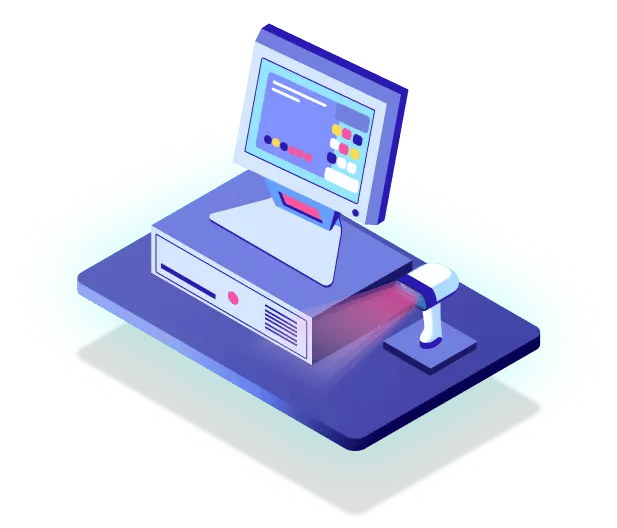Android is currently the most popular operating system in the world. Yet, perhaps because of our familiarity with Android as the smartphone operating system, there is a tendency to dismiss it as somehow less than worthy. A POS system is a point-of-sale solution used in retail and related industries. Many of these professional devices run on Android.
For that reason a Top-5 list of reasons to use an embedded Android for your POS system fleet as operating system seems both fitting and necessary. It is fitting because it remains mostly unrealized that more devices run on Android than on any other operating system. It is necessary because in spite of Android’s proven usefulness and popularity there is a tendency to look down upon it and not grant it the respect it deserves.
In 2021, the POS universe is dominated by two major players. One is Android. It is low cost. It is open source and distributed with a developer-friendly open-source license. Software is often free. It is also compatible with a wide range of hardware. The other top operating system is expensive. The hardware options are limited. The licensing is restrictive. The software is seldom free.
No doubt there are good things that could be said about the “other” operating system. It’s not really a debate. This Top-5 list is about showcasing Android and providing some insight into how Android’s combination of low costs, a wide range of supported hardware, and proven reliability have come together to push it toward the top spot among operating systems favored by POS builders. Highlighting just a few of the advantages that an embedded Android operating system can bring to your POS fleet might make it easier to cast aside any lingering doubts that might still persist.

Source: emteria
Top-5: The party favorites
Everyone knows that at any party the best way to make a good impression is with a quick list. The details can wait until later.
The top-5 reasons for using an embedded Android list:
Top-5: The long form
Creating a quick impression is easy. For a lasting impression it is usually necessary to supply some of the details.
A familiar user interface
It is not necessary to invent the wheel when you are already rolling. Many customers will intuitively know what to do if they encounter an Android-based POS device.
For decades engineers and developers were taught to embrace KISS—Keep It Simple, Stupid. Android’s User Interface (UI) embraces the KISS principles.
Nobody appreciates a familiar user interface more than a busy client. Clients are not interested in the cleverness of your UI unless it helps them through a process. They want to get in, finish quickly, get out and then get on with their lives. Nobody wants to waste their time fighting a UI that is difficult to navigate.
OEMs adopting Android will find that they have partnered with a company that understands the value of a uniform and user-friendly UI. Google is relentless in its pursuit of UI perfection as demonstrated by their UI/UX rules and guidelines. As a business owner you will benefit from Googles UI vigilance with no impact on your bottom line. With most of the UI design being handled by dedicated development teams, your developers can stay focused on those areas of greatest importance to your business.
The Android UI which your embedded Android system will leverage is already familiar to users of smart phones around the world. Even iOS users are unlikely to have difficulty navigating within an Android environment. Customers from the ages 8 to 80 have been prepped by life to conduct business on your kiosk.
In conclusion, when customers encounter a UI that doesn’t frighten them they’re more likely to come back for more.
Enhanced security
Android is an open-source system. This story starts with some of the largest tech-companies in the world working around-the-clock to tighten security on the popular operating system. But it does not end there. There is also a world-wide consortium of open-source proponents who are also working to tighten security. Finally, Android runs on a Linux kernel. This throws even more development resources into the mix of those dedicated to solidifying Android, even if they really intend it for Linux.
No operating system can offer absolute guarantees when it comes to security, but there are several factors which can shift the odds in your favor.
Android devices are not clones. Unlike with some products that limit hardware and software choices, Android developers are given a much larger palette of choices from which to create their projects. Malicious attackers prefer the largest targets. It is a testament to Android’s versatility that in spite of being the most widely used operating system it is not often seen as the largest target. The diversified DNA of the embedded Android POS device provides a level of protection that, not unlike in the biological world, makes it less likely that large swatches of systems will fall vulnerable to a single virus.
This does not mean that Android developers are content to sit back and leave their security concerns to chance. Google as well as several of the world’s largest telecommunication companies continue to invest heavily in Android security. For users of embedded Android operating systems this makes you a beneficiary of free security upgrades.
Enhancing enhanced security
Software patches are always well intentioned but even they can sometimes create undesirable side-effects. On occasion a security update may conflict with some aspect of required functionally. Much of this this unnecessary angst can be eliminated with the use of a managed operating system, such as emteria.OS.
Among the many advantages provided one is to identify and resolve compatibility issues before potentially disruptive software upgrades are pushed to in-service devices. With this type of management unnecessary device downtime can be avoided while necessary security upgrades continue to be distributed in a timely manner.
Open source licensing Enhanced security
Open source licensing is freedom although in some situations it nay really seem as though there is, “nothing else to lose.”
Both the Linux and Android open source licenses provide users access to quality software. Much of it is free of royalty payments or use restrictions. While there is much about the license structures for Linux and Android that are that is similar, Android offers additional benefits for developers that are not available in Linux.
All Linux distributions are governed by the GNU/Linux license. The GNU/Linux license obliges creators to share their work freely to the public. This is obviously problematic for developers or organizations wishing to retain their intellectual property.
Broadly speaking the Android ASOP, or Android Open Source License, is a more vendor-friendly implementation of the GNU/Linux license. It allows vendors or creators the opportunity to work in an open source environment while simultaneously providing a right to choose to protect their intellectual property.
Reduced power consumption
If you are a builder of cutting-edge devices with mega-watt power supplies and impressive cooling towers then this may not be of any concern to you. However, if what you are doing is attempting to build the best product possible at the lowest cost possible then you may find that low power consumption, in all of its definitions, is a critical factor.
When Android first emerged from the idea room it was seen as the small-footprint operating system that would soon dominate the still developing Internet of things. Since Android’s beginnings hardware development has advanced much faster than had been anticipated. Not unsurprisingly Android’s footprint has also grown, but only as necessary. Its primary mission has not changed.
Android remains a relatively small footprint operating system. Combined with software support for virtually any peripheral device and continued commitment to ARM and other low-power devices reduced power consumption factors can be significant tools for keeping the final cost of your POS device under control.
Rich development libraries
“Reduced Power Consumption” helps to explain why Android is a small operating system and suitable for so many low-powered POS devices. “Rich Development Libraries” seeks to expand upon what it is that makes Android large.
Android was built with Java in mind. What this means is that your developers will have access to the many thousands of APIs developed of the lifetime of Java. It helps to assure that compatibility for hardware and software, both old and new remains within easy reach of your developers.
Some users may say that Java, which remains among the top 3 programming languages in 2021, is too old-school for their taste. That’s OK. Android also supports Kotlin. Kotlin will provide that 21st century java-jolt, along with access to most of those old Java APIs, for your embedded Android POS fleet.
A top-5 closing statement
The combination of common interest, a directed focus on the user experience and a commitment to smaller form come together to create what may be the most solid foundation possible for your embedded Android system. It is a perfect storm of factors that assure your Android POS will remain relevant for as long as could ever be reasonably expected.







